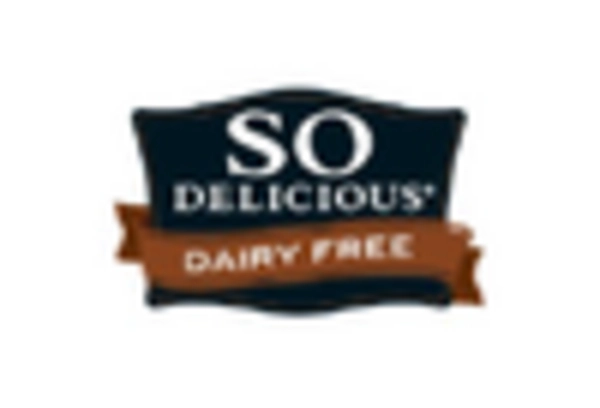Diverse Flavor Offerings
The Organic Ice Cream Market is witnessing a surge in demand for diverse and innovative flavor offerings. Consumers are increasingly adventurous in their taste preferences, seeking unique and exotic flavors that go beyond traditional options. This trend is supported by Market Research Future indicating that specialty flavors, such as lavender honey and matcha green tea, are gaining popularity among consumers. The introduction of limited-edition flavors and collaborations with local artisans further enhances the appeal of organic ice cream. As brands strive to differentiate themselves in a competitive landscape, the emphasis on flavor innovation is likely to drive growth within the Organic Ice Cream Market, attracting a broader consumer base.
Rising Disposable Income
The rise in disposable income across various demographics is contributing to the growth of the Organic Ice Cream Market. As consumers experience increased financial flexibility, they are more willing to spend on premium products, including organic ice cream. This trend is particularly evident in urban areas, where consumers are increasingly prioritizing quality over quantity. Market data indicates that households with higher disposable incomes are more likely to purchase organic products, including ice cream. Consequently, the Organic Ice Cream Market is expected to benefit from this economic trend, as more consumers opt for indulgent yet health-conscious dessert options.
Health Benefits of Organic Ingredients
The increasing awareness of health benefits associated with organic ingredients appears to be a primary driver for the Organic Ice Cream Market. Consumers are increasingly seeking products that are free from artificial additives and preservatives. This trend is reflected in the rising demand for organic ice cream, which is perceived as a healthier alternative to conventional ice cream. According to recent data, the organic ice cream segment has experienced a growth rate of approximately 10% annually, indicating a robust market potential. As consumers prioritize health and wellness, the Organic Ice Cream Market is likely to see continued expansion, driven by the desire for nutritious and wholesome dessert options.
Sustainability and Ethical Consumption
Sustainability concerns are becoming increasingly prominent among consumers, influencing their purchasing decisions in the Organic Ice Cream Market. The demand for environmentally friendly products is on the rise, as consumers seek brands that align with their values regarding sustainability. This shift is evident in the growing preference for organic ice cream made from ethically sourced ingredients and sustainable packaging. Market data suggests that brands emphasizing sustainability have seen a notable increase in sales, with some reporting growth rates exceeding 15%. As the focus on ethical consumption continues to evolve, the Organic Ice Cream Market is poised to benefit from this trend, attracting environmentally conscious consumers.
Increased Availability of Organic Products
The expansion of distribution channels for organic products is a significant driver for the Organic Ice Cream Market. Retailers are increasingly dedicating shelf space to organic offerings, making it easier for consumers to access organic ice cream. This trend is supported by data showing that organic product sales in supermarkets and specialty stores have risen substantially, with organic ice cream being a key category. As more retailers recognize the demand for organic options, the availability of organic ice cream is likely to increase, further fueling growth in the Organic Ice Cream Market. Enhanced accessibility may lead to a broader consumer base, encouraging trial and repeat purchases.

















